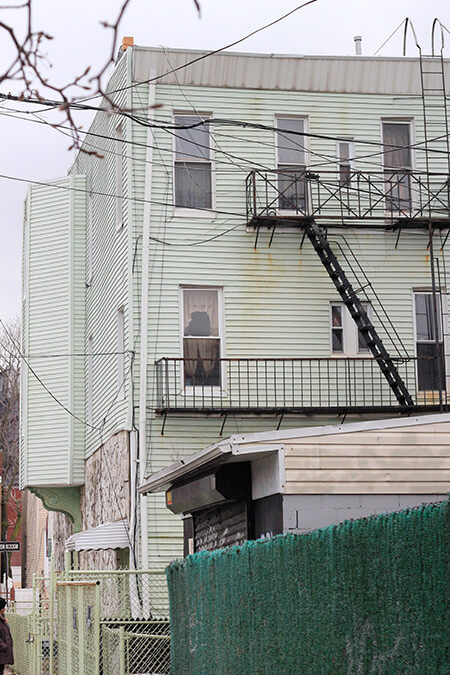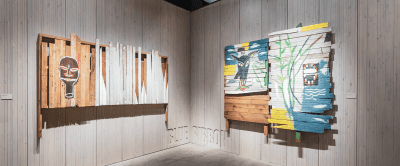The 5 Brooklyn Neighborhoods That Will Never Change (Probably)


E. 3rd Street, Windsor Terrace
photo by Austin McAllister
We all know Brooklyn’s changing. To paraphrase a famous Minnesotan, you don’t need a weatherman to know which way the wind blows—not least because the wind blows really, really hard in some parts of Brooklyn due to the wind tunnels created by the construction of so many tall towers along the waterfront. But so, earlier this week, Complex published a list of eight Brooklyn neighborhoods which will soon be unrecognizable due to their ongoing—and rapid—development. But while it’s true that the areas mentioned by Complex—Downtown Brooklyn, Greenpoint, and Red Hook among others—are bound to look dramatically different in the next few years, it’s just not the case that all of the borough will become unrecognizable in years to come.
The reasons that places like Williamsburg and DUMBO have changed so much are not solely because of gentrification or hipsters (ubiquitous buzzwords though they might be), but are rather based in the deliberate actions of developers and the city’s building and planning division. But in the same way that vast swathes of Brooklyn (particularly along the waterfront) are going to be (or have been already) rezoned and rapidly developed, there are other parts of Brooklyn that are protected from this type of change and thus will probably remain relatively static in years to come. Of course, even these neighborhoods are potentially subject to (or have already experienced) gentrification in the sense of rising property values and an influx of residents who might previously have chosen to live elsewhere in the borough or even the city. That said, there is a difference in the type of organic gentrification that happens when people move into a neighborhood and start changing it from within (i.e. renovating and refurbishing existing homes in a way respectful to the neighborhood’s existing architecture; patronizing and revitalizing long-standing restaurants, leading to the eventual opening of more restaurants; introducing positive neighborhood-oriented projects, like CSAs or community gardens), and the type of destructive development that can happen when huge buildings aimed to attract thousands of new residents are plopped down in places without regard for the existing infrastructure. The following neighborhoods though, are ones that are (probably!) protected from changing all that much in the coming years for differing reasons that will hopefully achieve the same result, namely preserving some sort of continuity in this borough of ours.
Windsor Terrace
This still-quiet community underwent an incredibly dramatic and disruptive change decades ago, when Robert Moses decided to plow through the neighborhood in order to lay down the automobile-friendly, pedestrian-hostile, completely unnecessary Prospect Expressway. But while this road is still something of a blight on the Windy T, bisecting it into tow discreet sections (one Greenwood Cemetery-adjacent and the other Prospect Park-adjacent), its existence is something that residents are now used to, if not thrilled by. However, the real reason that Windsor Terrace won’t be developing as dramatically as its neighbor to the north, Park Slope, is that there are relatively few parts of the ‘hood that can sustain commercial development in a meaningful way, and so the area has remained overwhelmingly residential. Also, because of the existence of the Prospect Expressway, this is a very car-friendly area, making it almost a bedroom-community within the borough. And finally, the preponderance of single-family homes that tend to be passed down to the next generation make this a place unlikely to see the advent of the towering residential building. So, sure, Windsor Terrace has gotten progressively more expensive in the last decade or so, but it’s still recognizable as the place it has been for decades.
Sea Gate
Not many people even know of the existence of this gated community right next to Coney Island, unless, of course, they heard about it when it was ravaged during Hurricane Sandy. This is a purely residential area of about 900 homes, and Sea Gaters (as they are known by no one) pay for their own security force, garbage men, and sundry other amenities, including a private life guard crew. What’s interesting about Sea Gate’s undoubted preservation is that its immediate neighbor to the east is Coney Island, which has gone through massive changes in the last decade and is due for many more. Meanwhile, though, Sea Gate will remain protected from the whims of developers, even if it can’t protect itself from the whims of, you know, climate change. So if it doesn’t end up underwater, Sea Gate will probably look the same in the future.
Gerritsen Beach
Geographically isolated Gerritsen Beach also took a hard hit during Hurricane Sandy, but has recovered nicely and remains looking and feeling pretty much as it has since Dutch settler Wolphort Gerretse arrived centuries ago. Well, ok. There’s a lot more houses there now than there were then, but it’s been literally hundreds of years and there are still under 5,000 residents in the area. There are many parts of Brooklyn that are somewhat closed, ethnically homogenous communities (just look at Borough Park or areas in South Williamsburg), but Gerritsen Beach stands out because it’s also geographically isolated, thus leading to little risk that it will change much from how it is today.
Ditmas Park
While this neighborhood has certainly changed in terms of demographics in recent years, it’s architectural uniformity in the form of gorgeous Victorian-era mansions has led to much of the area possessing landmark status, thus preserving a very important element of the ‘hood. Not dissimilar to Windsor Terrace in the sense of having limited room for commercial development (most retail spots are on Cortelyou Road or Newkirk Avenue, leaving a huge amount of purely residential space), Ditmas Park’s character can’t been threatened by the arrival of restaurants or small retail stores and instead just winds up being enhanced.
Bensonhurst
So here’s the thing with Bensonhurst—it’s changed and continues changing, but it remarkably winds up pretty much staying the same. It’s sort of the Möbius Strip of Brooklyn neighborhoods. This area was long a stronghold for Italian-Americans—and it remains so today!—but it has also had a significant influx of Chinese and Russian immigrants. While you might think this would quickly render it unrecognizable, you’d be wrong! The faces on the street and the restaurants lining 18th Avenue might have changed somewhat but the spirit of the Bensonhurst—working-class, community-oriented if not clannish—remains the same. And this is one place that will never be called the next Williamsburg, not least because it’s too much of a pain in the ass to get to—although served by the D and N trains, it’s not rare for people to have 20 block walks to the closest subway, making Bensonhurst a questionable choice for commuters.
Of course, we don’t have a crystal ball (though we do have a trusty tarot deck, but that’s another story), and so can’t predict for sure what will happen in Brooklyn in the coming years. We’re sure that those long-ago Windsor Terrace residents never could have imagined what Robert Moses would do. But we can say with some confidence that the best way to preserve a neighborhood’s—or a borough’s, or a city’s—integrity is by living there and investing yourself in the things that make a place livable—the schools, parks, shops, and public spaces. What we’re trying to say is, don’t think of any part of Brooklyn as a place to pass through on the way to somewhere better. Long called the “borough of homes,” Brooklyn will give back to you what you put into it. So make what you put into it count.
Follow Kristin Iversen on twitter @kmiversen
You might also like 




















